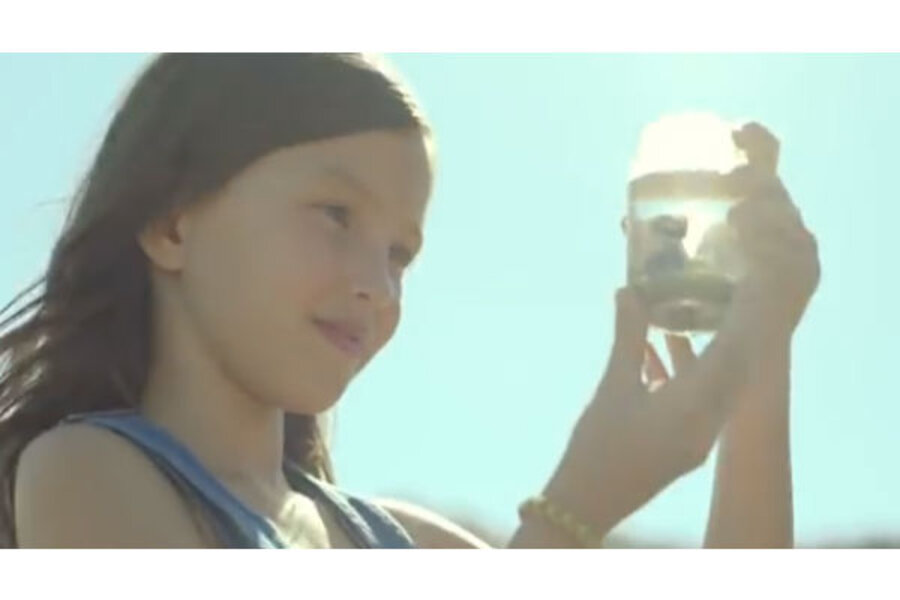Verizon joins the battle for girls in STEM
A little girl may be born to be a scientist or mathematician, but if her parents constantly thwart and re-route her interest from STEM (Science Technology Engineering and Math) to the state of her appearance, the message may eventually be received that girls should be pretty, rather than pretty smart.
That’s the focus of a new Verizon commercial that’s sweeping the Internet this week making parents both think twice about how we talk to girls.
Verizon is working with Makers.com and the Verizon Foundation to encourage more girls to get involved with high-tech STEM fields through a campaign identified by the #inspirehermind hashtag.
This video caught my eye because the image for the link was of a girl building a small rocket and the comments posted on it were all about how the video had made viewers cry.
In the commercial we see a little girl with a keen, inquisitive mind growing up to become a teenager.
However, at every step of her development, her innate interest in science and math are curtailed by the voices of her parents chiding her not to get her dress dirty, that her experiments should be dismantled and the hand over the power tools to her brother to use.
While all this is disturbing, the coup de grace is when the girl, now an older teen, walks down a school hallway and we see a science fair poster in a glass case.
Instead of reading the poster, the now defeated mind of the girl can only see her own reflection in the glass which she uses to put on lip gloss.
I burst into tears and I don’t even have a daughter. In part, it made me think of all the times I stopped one of my sons from exploring along a river or climbing a tree because I didn’t want them to be a muddy mess or I was afraid for them.
Also, while I am usually concerned about yelling at one of my kids, this video made me aware of just how powerful even a series of subtle signals can have on a child.
Then the screen goes black and the numbers begin to roll informing us that, “66% of all fourth grade girls say they like science and math, yet only 18% of college engineering majors are women.”
As the mom of four boys, educators and other parents began briefing me on STEM opportunities 20 years ago shortly after my first son was born.
After seeing this commercial, however, I wondered how many moms of girls were in the STEM loop with me.
Turns out that my friends are aware of the basic factoids about women holding less than 25 percent of our country's STEM jobs, but many considered STEM more of something they would passively welcome if their goals showed an independently arrived at interest rather than an active goal for their girls.
My friend, Dr. Arthur Bowman of the Norfolk State University Biology Department, runs Science Everywhere LLC in Virginia. He told me that, for both boys and girls in America, there is what he calls a “STEM Crisis” as only 44 percent of 2013 US high school graduates were ready for college-level math and only 36 percent of 2013 US high school students are ready for college-level science.
“Oh my goodness,” Bowman said after seeing the Verizon commercial. “That’s just how it happens with girls too. It’s that subtle course correction away from STEM that’s doing the damage with female students all along the path.”
Bowman, the father of two girls, suggested a good read for parents is Malcom Gladwell’s most recent book, “David and Goliath” wherein he says, “the author shows how the tremendous influence of the self-confidence and determination of individuals seems to be the major determinant in their remaining in STEM undergraduate majors, and being positioned to go on to enter a STEM career.”
Maybe it’s because I saw this commercial a few days ago that I was so moved by a screaming argument that occurred between my youngest son Quin, 10, and a little girl who lives in the neighborhood.
The girl was screaming at the top of her voice that the discarded concrete and construction junk we call “rip-rap” along the water’s edge was placed there by a form of divine hybrid of religion and magic in a complex tale blending Noah’s Ark and Tinkerbell.
For the record, Quin goes to church with me, thinks Tinkerbell is the bomb and knows all about Noah’s ark, but he is also a science nut who watches a lot of videos online about the subject.
Quin was trying to get her to come inside to see a video on how cities like ours often place old construction debris and concrete junk we call “rip-rap” along the banks of rivers to prevent erosion.
He also knows that the city put the rocks there because we looked it up when he was doing a Lego League challenge on preventing natural disasters.
While the kids have since made up, I decided to email the video to the girl’s mother with a cheerful and encouraging note about how great it is that her little girl is so interested in science and hope for the best.
Perhaps this kind of commercial is most valuable as a communication opener between parents. This could serve to give subtle perspective to help all of us think about how our attitudes and words shape our kids.






